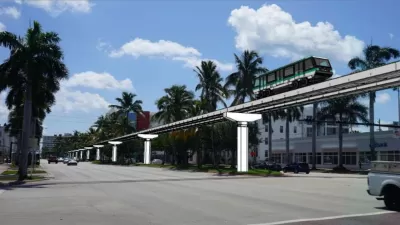No, it's not some stimulus package boondoggle- it turns out there truly was an underground monorail carrying public servants from the Senate Office Building to the Capitol Building. It opened in 1912 and lasted until 1961.
"From 1912-61 tunnels below the U.S. Senate building were filled with monorail cars carrying senators on the "shortest and most exclusive railway in the world." A short history about the monorail system appears on the Senate.gov website and is excerpted below.
I'm fascinated with early ideas of what "the monorail" was to become and even more fascinated with the transportation systems that (as in this case) were actually tried."
FROM SENATE.GOV:"The distance between the old Senate Office Building and the Capitol was only a fifth of a mile, but senators needed to traverse it multiple times on a typical legislative day. Had the Capitol been a skyscraper, elevators would have whisked members from their offices on different floors to the chamber. Instead, the office building and Capitol were linked by a horizontal elevator: a subway. Initially, transportation in the subway tunnel was provided by battery-powered yellow Studebaker coaches. Ten passengers could ride in each car, facing each other on benches. The buses ran along a concrete roadway at a maximum speed of 12 miles an hour. Rather than turn around at each terminus, they backed up for the return trip."
FULL STORY: U.S. Senate Monorail (1912)

Alabama: Trump Terminates Settlements for Black Communities Harmed By Raw Sewage
Trump deemed the landmark civil rights agreement “illegal DEI and environmental justice policy.”

Planetizen Federal Action Tracker
A weekly monitor of how Trump’s orders and actions are impacting planners and planning in America.

Why Should We Subsidize Public Transportation?
Many public transit agencies face financial stress due to rising costs, declining fare revenue, and declining subsidies. Transit advocates must provide a strong business case for increasing public transit funding.

Judge Orders Release of Frozen IRA, IIJA Funding
The decision is a victory for environmental groups who charged that freezing funds for critical infrastructure and disaster response programs caused “real and irreparable harm” to communities.

‘Clybourne Park’ Sets Stage for Housing Equity Discussions
Clybourne Park, a play exploring race, real estate, and community tensions, can set the stage for discussion on the lasting impacts of housing discrimination, gentrification, and the fight for affordability.

Understanding Road Diets
An explainer from Momentum highlights the advantages of reducing vehicle lanes in favor of more bike, transit, and pedestrian infrastructure.
Urban Design for Planners 1: Software Tools
This six-course series explores essential urban design concepts using open source software and equips planners with the tools they need to participate fully in the urban design process.
Planning for Universal Design
Learn the tools for implementing Universal Design in planning regulations.
Caltrans
Smith Gee Studio
Institute for Housing and Urban Development Studies (IHS)
City of Grandview
Harvard GSD Executive Education
Toledo-Lucas County Plan Commissions
Salt Lake City
NYU Wagner Graduate School of Public Service





























